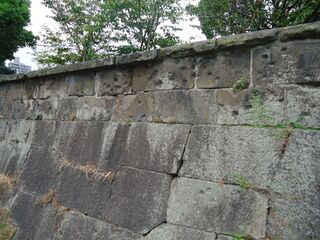Difference between revisions of "Shigakko"
| (One intermediate revision by the same user not shown) | |||
| Line 7: | Line 7: | ||
Those in Kagoshima originated with two schools established in [[1874]]/6, on the former grounds of the stables of [[Kagoshima castle]]. These two schools, one dedicated to the training of gunmen, and one cannon operators, were headed respectively by [[Shinohara Kunimoto]] and [[Murata Shinpachi]]. Twelve other such schools were established soon afterwards within [[Kagoshima]] City, including the [[Satsuma Army Cadet School]] for children, founded by Saigô with money from donations given in appreciation for his service, and that of his men, in the [[Boshin War]] which accompanied the [[Meiji Restoration]]; another 136 ''shigakkô'' were soon established elsewhere in the prefecture as well. In [[1877]], on the eve of the [[Satsuma Rebellion]], there were roughly 7,000 such schools in Kagoshima prefecture (formerly [[Satsuma han]]) alone, funded by the prefectural government, and serving roughly 20,000 students. | Those in Kagoshima originated with two schools established in [[1874]]/6, on the former grounds of the stables of [[Kagoshima castle]]. These two schools, one dedicated to the training of gunmen, and one cannon operators, were headed respectively by [[Shinohara Kunimoto]] and [[Murata Shinpachi]]. Twelve other such schools were established soon afterwards within [[Kagoshima]] City, including the [[Satsuma Army Cadet School]] for children, founded by Saigô with money from donations given in appreciation for his service, and that of his men, in the [[Boshin War]] which accompanied the [[Meiji Restoration]]; another 136 ''shigakkô'' were soon established elsewhere in the prefecture as well. In [[1877]], on the eve of the [[Satsuma Rebellion]], there were roughly 7,000 such schools in Kagoshima prefecture (formerly [[Satsuma han]]) alone, funded by the prefectural government, and serving roughly 20,000 students. | ||
| − | The lead schools, just outside Kagoshima castle, employed English and Dutch teachers, and aimed to prepare students to study abroad in Europe. The schools grew quite strong very quickly, as centers of political activity, and soon grew to have a militarist edge, opposed to the [[Meiji government]]. In 1877, a group of the more radical students from the school attacked a government munitions storehouse, igniting the beginning of the Satsuma Rebellion, in the wake of which the ''shigakkô'' were all shut down. | + | The lead schools, just outside Kagoshima castle, employed English and Dutch teachers, and aimed to prepare students to study abroad in Europe. The schools grew quite strong very quickly, as centers of political activity, and soon grew to have a militarist edge, opposed to the [[Meiji government]]. In 1877, a group of the more radical students from the school attacked a government munitions storehouse, igniting the beginning of the Satsuma Rebellion, in the wake of which the ''shigakkô'' were all shut down. One of the last battles of the Rebellion took place at the main school, as the Satsuma forces were pushed back towards [[battle of Shiroyama|Shiroyama]]. |
{{stub}} | {{stub}} | ||
| Line 16: | Line 16: | ||
[[Category:Meiji Period]] | [[Category:Meiji Period]] | ||
| + | [[Category:Historic Buildings]] | ||
Latest revision as of 09:18, 31 May 2015


- Japanese: 私学校 or 士学校 (shi gakkou)
Shigakkô were private centers of instruction for samurai youth, established and operated by pro-samurai figures such as Saigô Takamori, and prominent particularly in the early years of the Meiji period, particularly in Kagoshima prefecture. Many functioned as military academies, with a particular focus on martial skills, military strategy, leadership, and so forth, rather than a more civilian and liberal curriculum. The term can be written in two ways, with the homophones 「私学校」 and 「士学校」, both pronounced shigakkô, meaning "private school" and "warrior/aristocrat school," respectively.
Those in Kagoshima originated with two schools established in 1874/6, on the former grounds of the stables of Kagoshima castle. These two schools, one dedicated to the training of gunmen, and one cannon operators, were headed respectively by Shinohara Kunimoto and Murata Shinpachi. Twelve other such schools were established soon afterwards within Kagoshima City, including the Satsuma Army Cadet School for children, founded by Saigô with money from donations given in appreciation for his service, and that of his men, in the Boshin War which accompanied the Meiji Restoration; another 136 shigakkô were soon established elsewhere in the prefecture as well. In 1877, on the eve of the Satsuma Rebellion, there were roughly 7,000 such schools in Kagoshima prefecture (formerly Satsuma han) alone, funded by the prefectural government, and serving roughly 20,000 students.
The lead schools, just outside Kagoshima castle, employed English and Dutch teachers, and aimed to prepare students to study abroad in Europe. The schools grew quite strong very quickly, as centers of political activity, and soon grew to have a militarist edge, opposed to the Meiji government. In 1877, a group of the more radical students from the school attacked a government munitions storehouse, igniting the beginning of the Satsuma Rebellion, in the wake of which the shigakkô were all shut down. One of the last battles of the Rebellion took place at the main school, as the Satsuma forces were pushed back towards Shiroyama.
References
- Norman, E.H. Soldier and Peasant in Japan: The Origins of Conscription. New York: Institute for Pacific Relations, 1945. p44.
- Plaques on-site at Shigakkô, just outside Kagoshima castle, Kagoshima.[1]